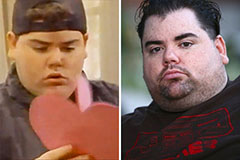Just how do you actually feel when it comes to Why is My Home Making Strange Plumbing Noises?

To identify loud plumbing, it is essential to establish initial whether the unwanted audios occur on the system's inlet side-in various other words, when water is transformed on-or on the drain side. Sounds on the inlet side have varied causes: too much water pressure, used valve and also faucet components, improperly linked pumps or other home appliances, incorrectly put pipe fasteners, and plumbing runs containing a lot of limited bends or other constraints. Noises on the drainpipe side typically originate from poor area or, as with some inlet side sound, a layout including limited bends.
Hissing
Hissing noise that occurs when a faucet is opened a little generally signals extreme water stress. Consult your local public utility if you believe this problem; it will certainly have the ability to tell you the water stress in your location and can set up a pressurereducing shutoff on the incoming water system pipeline if necessary.
Other Inlet Side Noises
Squeaking, squeaking, scraping, snapping, as well as touching usually are triggered by the development or tightening of pipes, normally copper ones supplying hot water. The audios take place as the pipes slide against loosened bolts or strike nearby house framing. You can usually pinpoint the location of the issue if the pipelines are revealed; simply adhere to the audio when the pipes are making noise. Probably you will discover a loose pipe wall mount or a location where pipelines exist so near to floor joists or other framing pieces that they clatter against them. Attaching foam pipe insulation around the pipes at the point of contact should remedy the problem. Make certain bands as well as hangers are secure and provide appropriate support. Where possible, pipe bolts need to be affixed to large architectural aspects such as foundation walls as opposed to to mounting; doing so minimizes the transmission of vibrations from plumbing to surfaces that can amplify and also move them. If connecting fasteners to framework is inescapable, cover pipes with insulation or other resistant product where they speak to bolts, and also sandwich completions of brand-new fasteners between rubber washers when installing them.
Dealing with plumbing runs that experience flow-restricting limited or many bends is a last hope that should be undertaken just after getting in touch with a knowledgeable plumbing service provider. Sadly, this situation is fairly usual in older residences that may not have actually been developed with indoor plumbing or that have seen numerous remodels, particularly by amateurs.
Chattering or Shrilling
Extreme chattering or screeching that occurs when a shutoff or faucet is turned on, which normally vanishes when the installation is opened fully, signals loosened or malfunctioning interior parts. The remedy is to replace the valve or faucet with a brand-new one.
Pumps as well as appliances such as cleaning makers and dish washers can transfer electric motor sound to pipes if they are poorly linked. Link such products to plumbing with plastic or rubber hoses-never rigid pipe-to isolate them.
Drain Noise
On the drain side of plumbing, the chief objectives are to eliminate surface areas that can be struck by falling or hurrying water as well as to shield pipes to consist of unavoidable audios.
In new building and construction, bathtubs, shower stalls, commodes, and wallmounted sinks and also basins need to be set on or against resistant underlayments to decrease the transmission of noise via them. Water-saving bathrooms and also faucets are much less noisy than standard models; mount them instead of older kinds even if codes in your location still allow utilizing older components.
Drainpipes that do not run up and down to the basement or that branch into straight pipe runs sustained at flooring joists or other mounting existing particularly bothersome sound issues. Such pipelines are big sufficient to radiate substantial vibration; they additionally bring substantial amounts of water, that makes the circumstance even worse. In new building and construction, specify cast-iron dirt pipes (the huge pipes that drain commodes) if you can afford them. Their enormity includes a lot of the noise made by water travelling through them. Additionally, prevent transmitting drainpipes in wall surfaces shared with bed rooms and also areas where people gather. Walls having drainpipes must be soundproofed as was described earlier, making use of double panels of sound-insulating fiberboard and also wallboard. Pipes themselves can be covered with unique fiberglass insulation made for the objective; such pipes have an invulnerable plastic skin (in some cases including lead). Outcomes are not constantly satisfying.
Thudding
Thudding noise, commonly accompanied by shivering pipes, when a faucet or home appliance shutoff is turned off is a condition called water hammer. The sound and also vibration are caused by the resounding wave of stress in the water, which suddenly has no place to go. Often opening up a valve that releases water promptly right into a section of piping including a limitation, arm joint, or tee installation can create the exact same problem.
Water hammer can generally be cured by installing fittings called air chambers or shock absorbers in the plumbing to which the issue shutoffs or taps are attached. These tools permit the shock wave created by the halted flow of water to dissipate in the air they include, which (unlike water) is compressible.
Older plumbing systems may have short vertical sections of capped pipe behind walls on faucet runs for the exact same function; these can ultimately fill with water, reducing or destroying their performance. The treatment is to drain the water system totally by turning off the major water valve and opening all faucets. After that open the primary supply shutoff as well as shut the taps individually, beginning with the faucet nearest the shutoff and also finishing with the one farthest away.
WHY IS MY PLUMBING MAKING SO MUCH NOISE?
This noise indeed sounds like someone is banging a hammer against your pipes! It happens when a faucet is opened, allowed to run for a bit, then quickly shut — causing the rushing water to slam against the shut-off valve.
To remedy this, you’ll need to check and refill your air chamber. Air chambers are filled with — you guessed it — air and help absorb the shock of moving water (that comes to a sudden stop). Over time, these chambers can fill with water, making them less effective.
You’ll want to turn off your home’s water supply, then open ALL faucets (from the bathroom sink to outdoor hose bib) to drain your pipes. Then, turn the water back on and hopefully the noise stops! If you’re still hearing the sound, give us a call to examine further.
Whistles
Whistling sounds can be frustrating, as sometimes the source isn’t easily identified. However, if you can pinpoint which faucet or valve that may be the cause, you’ll likely encounter a worn gasket or washer — an easy fix if you replace the worn parts!Whistling sounds from elsewhere can mean a number of things — from high water pressure to mineral deposits. Your best plan of attack here is to give our plumbing experts a call. We’ll be able to determine where the noise is coming from and what the cause may be, then recommend an effective fix!
Cracks or Ticks
Cracking or ticking typically comes from hot water going through cold, copper pipes. This causes the copper to expand resulting in a cracking or ticking sound. Once the pipes stop expanding, the noise should stop as well.
Pro tip: you may want to lower the temperature of your water heater to see if that helps lessen the sound, or wrapping the pipe in insulation can also help muffle the noise.
Bangs
Bangs typically come from water pressure that’s too high. To test for high water pressure, get a pressure gauge and attach it to your faucet. Water pressure should be no higher than 80 psi (pounds per square inch) and also no lower than 40 psi. If you find a number greater than 80 psi, then you’ve found your problem!
Next step is to give us a call in order to install a pressure regulator. Trust us, you don’t want to wait to resolve this issue. Not only is the sound annoying, but high water pressure can be destructive to your home — including damaging certain appliances, like your washer and dishwasher.
Dripping
You might be accustom to the slow quiet drip your kitchen faucet makes. You might have even tuned out your bathroom sink dripping and drabbing all day long — but it’s time to find its cause.
A slow drip could signify a variety of easy to fix issues, such as a worn out O ring, or loose part. And by ignoring the drip, you could be wasting up to 2,000 gallons of water a year! So start conserving water — get it looked at ASAP.
https://www.pwessig.com/blog/2018/december/why-is-my-plumbing-making-so-much-noise-/

I found that piece of writing about Diagnose Unwanted Plumbing Noises when surfing the web. Liked our content? Please share it. Let another person locate it. Many thanks for your time. Please check up our blog back soon.
Free Quote
 Michael Bower Then & Now!
Michael Bower Then & Now! Michael C. Maronna Then & Now!
Michael C. Maronna Then & Now! Seth Green Then & Now!
Seth Green Then & Now! Earvin Johnson III Then & Now!
Earvin Johnson III Then & Now! Naomi Grossman Then & Now!
Naomi Grossman Then & Now!